Chinese Beginners Guide
![]() This guide was written for Chinese Beginners that don’t know where to start learning Mandarin Chinese.
This guide was written for Chinese Beginners that don’t know where to start learning Mandarin Chinese.
Why Learn Chinese?
Mandarin Chinese is currently ranked first as the most spoken language in the world with nearly an estimated billion speakers in China, Taiwan, and other parts of the world.
The most spoken Chinese dialect is the Mandarin dialect, which is understood by the vast majority of Chinese Speakers.
Contents
- Chinese Beginners Guide
- Chinese Grammar Rules
- Consider Using a Language Learning Program
- Chinese Beginners Guide This guide was written for Chinese Beginners that don’t know where to start learning Mandarin Chinese. Why Learn Chinese?
- Chinese Beginners Guide Menu
- Chinese Language Learning Tips
- Chinese Alphabet
- Chinese Numbers
- Chinese Vocabulary and Phrases
- Chinese Grammar
- Chinese Grammar Rules
- Consider Using a Language Learning Program
- If you are really serious about learning Chinese and want to maximize your time then you should consider using a Chinese language course to further aid you in your quest to learn French. There are several great programs out there that deliver a great language learning experience. The advantages of a language learning program are the organization and having a next step already lined up. Most break down the lessons into 30-minute intervals that can fit into any type of schedule.
- Flexible to retry a lesson to make sure you understand what you are learning and give you confidence in succeeding.
- Related
So how to start learning Chinese?
Actually learning Chinese and able to speak Chinese isn’t very hard. A few tips below will help improve your Chinese skills step by step.
– You need to find a motive why you want to learn Chinese, and how long, how often you speak Chinese? E.g. : My colleague wanted to be a part time translator so he signed up for a Chinese course. My student had a Chinese girl friend and wanted to communicate with her and her parent in Asia. It all depends what motivates you to learn Chinese and always remember your motive.
– Use 20 minutes a day, to learn new words and practice the previous chapter, pronounce it out loud so you’ll remember them.
– Find a local group, or friends who are able to speak Chinese, go out with them more often and learn from them. You need a partner so you can improve your oral skills.
– Learn to speak and understand Chinese is easy, but writing and pronounce it accurately would be the harder part.
– There’s no faster way to master Chinese Language, because it has totally no connection with French, Italian or Spanish. Chinese characters itself has more than 3000 kinds of it and each has its own meaning. Combining 2 character will form another meaning. If you wan to master Chinese language, go to the resource box below and you can find how to master them well.
Chinese Language Learning Tips
Actually learning Chinese and able to speak Chinese isn’t very hard. A few tips below will help improve your Chinese skills step by step.
– You need to find a motive why you want to learn Chinese, and how long, how often you speak Chinese? E.g. : My colleague wanted to be a part time translator so he signed up for a Chinese course. My student had a Chinese girl friend and wanted to communicate with her and her parent in Asia. It all depends what motivates you to learn Chinese and always remember your motive.
– Use 20 minutes a day, to learn new words and practice the previous chapter, pronounce it out loud so you’ll remember them.
– Find a local group, or friends who are able to speak Chinese, go out with them more often and learn from them. You need a partner so you can improve your oral skills.
– Learn to speak and understand Chinese is easy, but writing and pronounce it accurately would be the harder part.
– There’s no faster way to master Chinese Language, because it has totally no connection with French, Italian or Spanish. Chinese characters itself has more than 3000 kinds of it and each has its own meaning. Combining 2 character will form another meaning.
Chinese Alphabet
Learning to read the Chinese Alphabet should be the first stop for Chinese beginners. It’s important to understand that there isn’t exactly a Chinese alphabet. Chinese uses Chinese characters to represent ideas.
Chinese Numbers
Understanding how to write Chinese numbers should take very little time and effort to learn.
Chinese numbers are written from Left to Right like English numbers.
Although the Chinese symbol for zero appears above, it’s only used when it comes to money.
You write the base Chinese Number then what I call a “multiplier” if the number is above ten. Here are a couple of examples to demonstrate what I mean.
It’s actually pretty straightforward when it comes to learning how to use the Chinese number system. Pronouncing Chinese straightforward easier. Because they follow the exact same pattern in the above example.
To illustrate what I mean, here are Chinese numbers 1 to 100.
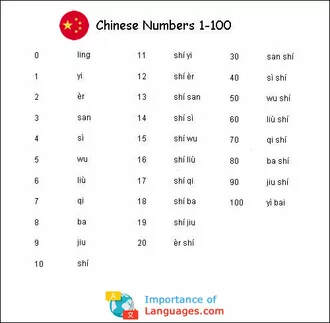
You really just need to memorize how to pronounce the base Chinese Numbers then you can easily pronounce any Chinese number. I personally choose to remember that Chinese numbers follow a “number-position” type pattern. Example of what I mean..
Understanding how to write Chinese numbers is really that easy to learn. Should only take you an hour or two to fully memorizes the Chinese number system.
Chinese Vocabulary and Phrases
The logical next step after learning the Chinese Alphabet for Chinese beginners would be to start developing your Chinese vocabulary with Chinese words and phrases. I put together two posts of Chinese vocabulary and one post of Chinese phrases for Chinese beginners to start building their knowledge of Chinese Words and Phrases.
Chinese Grammar
The Chinese grammar rules you must follow and understand to properly speak the Chinese language.
Learning to understand Mandarin Chinese sentence structure isn’t simple to grasp.
To narrow it down you can say it follows a Subject-Verb-Object pattern. Chinese nouns have formal and informal ways of speaking and writing nouns and pronouns. Context plays a major role in figuring out what tense Chinese Verbs refer to. Two or more verbs can stack in Chinese Grammar, as Verbal complements(after the main verb) or as coverbs(before the main verb).
Because Chinese doesn’t have a real alphabet in the standard sense. Chinese Pinyin is a system used to teach Chinese Characters into romanized Latin script that means “spelled sound”. Each Syllable is made up of Sheng and a yun. Sheng is the consonant that begins the syllable• Yun follows the Sheng and is usually a vowel sound. It’ll take a while to learn Chinese Characters since there are more than four hundred exist in the Chinese language. And that doesn’t count the various tonal variations. The overall total of possible combinations leaves Mandarin Chinese with total of 1600(400 base combinations characters with 4 tones each) unique syllables.
The standard Chinese dialect of Mandarin Chinese has four tonal marks that radically change the meaning of the word and crucial when you learn Chinese Pinyin. Theses are indicated by marks over the vowels or by using numbers along with the Chinese Pinyin.
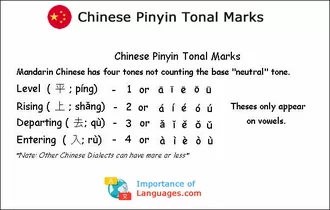
Pronouncing Chinese Tones
Level – This tone is pronounced high and level. Almost monotone.
Rising – This tone has a increase in pitch.
Departing – This tone sounds like it’s “dipping”. Falls and Rises again.
Entering – This tone starts out high then drops in tone.
When trying to learn Chinese Pinyin. You must pay attention to Tonal marks because they can change the word from one meaning to a whole completely different meaning. Example of how changing the tonal marks changes the meaning of the Chinese Character.
I put together a directory for you to start to learn Chinese Pinyin characters. Sorted by tone alphabetically. I also split “c”, “s”, and “z” each into separate pages to cut down on the size of the images and make it more organized.
Learn Chinese Pinyin is extremely important when it comes to learning to write and read Chinese Characters. So make sure to practice pronouncing and writing Chinese Pinyin whenever you can. As many times as you can.
Chinese Grammar Rules
The fun part of learning any language.. learning Chinese grammar rules! The rules you must follow to properly speak the Chinese language. But don’t worry about how hard learning Chinese Grammar might feel at first. Learning Chinese grammar rules is one of the most effective ways to speed up your ability to speak the Chinese language. Keep in mind this is just a basic introduction to understanding how Chinese grammar works.
Chinese Grammar Rules: Sentence Structure
• A lot of learning how to speak Mandarin is encoded in learning Chinese sentence structure. Some state Mandarin Chinese grammar is simple but it’s really not.
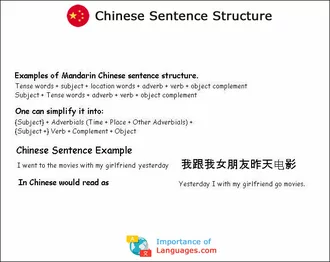
Chinese Grammar Rules: Nouns and Pronouns
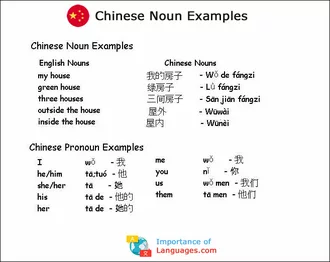
• Context is the only way to tell if a Chinese Noun is singular or plural.
• Chinese has single pronunciations for common pronouns such as “he”, “she”, or “it”.
• The context of the sentence is very important when figuring out the “gender” in which the pronoun or noun is referring to.
• Chinese nouns have formal and informal ways of speaking and writing them.
Chinese Grammar Rules: Verbs
• Chinese Verbs have no tense. Verbs only have one form regardless of the time it’s performed.
• To indicate the time of the action such as “yesterday”, “today” and “tomorrow”. The words are added either before or after the subject.
• Conjugating and irregular have no part in Chinese.
• Two or more verbs can stack in Chinese Grammar, as Verbal complements(after the main verb) or as coverbs(before the main verb)
Chinese Grammar Rules: Adjectives

• An adverb and an adjective in combination are ordinarily treated as a phrase and written as two units. Some adverb + adjective constructions, however, undergo a change in meaning so that they express a single concept rather than two independent concepts; such transformed adverb + adjective constructions are considered single words and written as single units.
Learning Chinese grammar rules can be considered the cornerstone of the language and will take some time to learn but creates a sturdy foundation to help you completely learn Chinese in no time. Take the time to let these points soak in, then build on them as you continue your Chinese studies. Good luck, and have fun learning Chinese
Chinese vocabulary lists to help start you on your way to learning Chinese vocabulary.
Your Chinese vocabulary should begin with words you could use in your daily life and should be familiar with already. Below are some useful Chinese vocabulary and expressions for Continents, Weather, Anatomy, Home/Rooms, Vehicles, and Countries from around the world.
Depending on where you live. You are taught a little differently when it comes to continents, if you’re an American like me, you were taught 7 continents. In parts of Europe, some are taught 5-6 continents instead. Either merging Europe and Asia as Eurasia and combining North and South America as one continent.

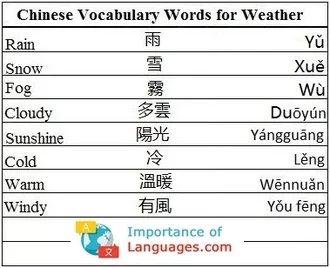
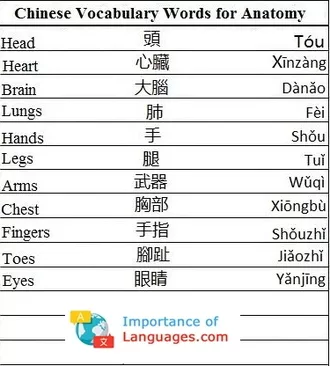
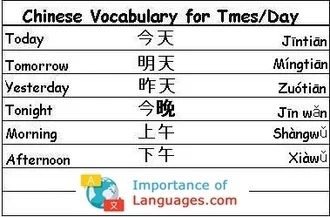
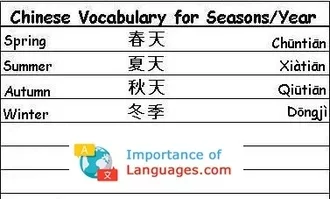
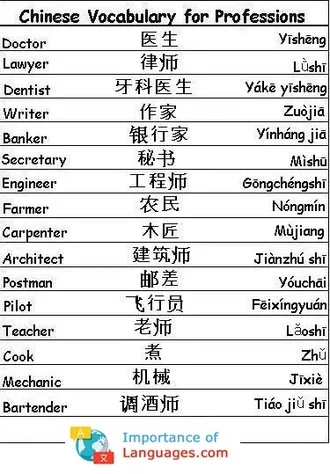
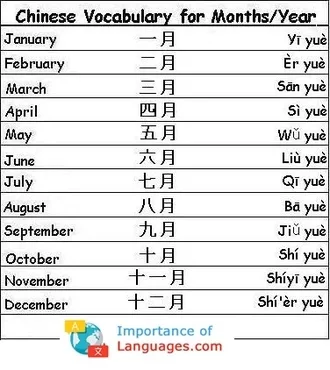
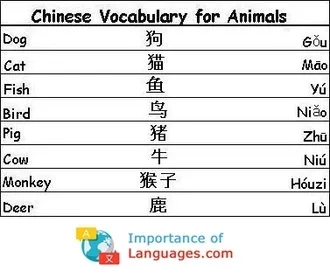
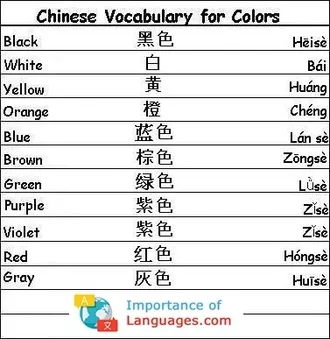
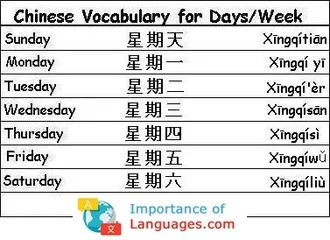
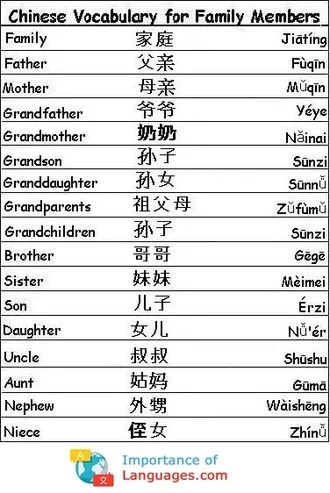
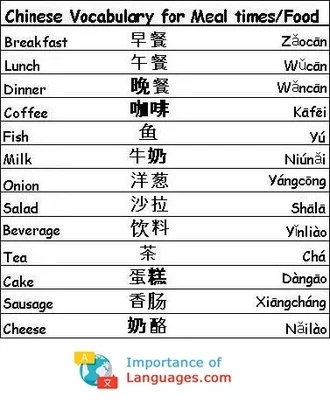
Consider Using a Language Learning Program

If you are really serious about learning Chinese and want to maximize your time then you should consider using a Chinese language course to further aid you in your quest to learn French. There are several great programs out there that deliver a great language learning experience. The advantages of a language learning program is the organization and having a next step already lined up. Most break down the lessons into 30-minute intervals that can fit into any type of schedule. Flexible to retry a lesson to make sure you understand what you are learning and give you confidence in succeeding.
Examples of great Chinese language programs can be found below.
Chinese Beginners Guide
 This guide was written for Chinese Beginners that don’t know where to start learning Mandarin Chinese.
This guide was written for Chinese Beginners that don’t know where to start learning Mandarin Chinese.
Why Learn Chinese?
Mandarin Chinese is currently ranked first as the most spoken language in the world with nearly an estimated billion speakers in China, Taiwan, and other parts of the world.
The most spoken Chinese dialect is the Mandarin dialect, which is understood by the vast majority of Chinese Speakers.
So how to start learning Chinese?
Actually learning Chinese and able to speak Chinese isn’t very hard. A few tips below will help improve your Chinese skills step by step.
– You need to find a motive why you want to learn Chinese, and how long, how often you speak Chinese? E.g. : My colleague wanted to be a part time translator so he signed up for a Chinese course. My student had a Chinese girl friend and wanted to communicate with her and her parent in Asia. It all depends what motivates you to learn Chinese and always remember your motive.
– Use 20 minutes a day, to learn new words and practice the previous chapter, pronounce it out loud so you’ll remember them.
– Find a local group, or friends who are able to speak Chinese, go out with them more often and learn from them. You need a partner so you can improve your oral skills.
– Learn to speak and understand Chinese is easy, but writing and pronounce it accurately would be the harder part.
– There’s no faster way to master Chinese Language, because it has totally no connection with French, Italian or Spanish. Chinese characters itself has more than 3000 kinds of it and each has its own meaning. Combining 2 character will form another meaning. If you wan to master Chinese language, go to the resource box below and you can find how to master them well.
Chinese Language Learning Tips
Actually learning Chinese and able to speak Chinese isn’t very hard. A few tips below will help improve your Chinese skills step by step.
– You need to find a motive why you want to learn Chinese, and how long, how often you speak Chinese? E.g. : My colleague wanted to be a part time translator so he signed up for a Chinese course. My student had a Chinese girl friend and wanted to communicate with her and her parent in Asia. It all depends what motivates you to learn Chinese and always remember your motive.
– Use 20 minutes a day, to learn new words and practice the previous chapter, pronounce it out loud so you’ll remember them.
– Find a local group, or friends who are able to speak Chinese, go out with them more often and learn from them. You need a partner so you can improve your oral skills.
– Learn to speak and understand Chinese is easy, but writing and pronounce it accurately would be the harder part.
– There’s no faster way to master Chinese Language, because it has totally no connection with French, Italian or Spanish. Chinese characters itself has more than 3000 kinds of it and each has its own meaning. Combining 2 character will form another meaning.
Chinese Alphabet
Learning to read the Chinese Alphabet should be the first stop for Chinese beginners. It’s important to understand that there isn’t exactly a Chinese alphabet. Chinese uses Chinese characters to represent ideas.
Chinese Numbers
Understanding how to write Chinese numbers should take very little time and effort to learn.
Chinese numbers are written from Left to Right like English numbers.
Although the Chinese symbol for zero appears above, it’s only used when it comes to money.
You write the base Chinese Number then what I call a “multiplier” if the number is above ten. Here are a couple of examples to demonstrate what I mean.
It’s actually pretty straightforward when it comes to learning how to use the Chinese number system. Pronouncing Chinese straightforward easier. Because they follow the exact same pattern in the above example.
To illustrate what I mean, here are Chinese numbers 1 to 100.

You really just need to memorize how to pronounce the base Chinese Numbers then you can easily pronounce any Chinese number. I personally choose to remember that Chinese numbers follow a “number-position” type pattern. Example of what I mean..
Understanding how to write Chinese numbers is really that easy to learn. Should only take you an hour or two to fully memorizes the Chinese number system.
Chinese Vocabulary and Phrases
The logical next step after learning the Chinese Alphabet for Chinese beginners would be to start developing your Chinese vocabulary with Chinese words and phrases. I put together two posts of Chinese vocabulary and one post of Chinese phrases for Chinese beginners to start building their knowledge of Chinese Words and Phrases.
Chinese Grammar
The Chinese grammar rules you must follow and understand to properly speak the Chinese language.
Learning to understand Mandarin Chinese sentence structure isn’t simple to grasp.
To narrow it down you can say it follows a Subject-Verb-Object pattern. Chinese nouns have formal and informal ways of speaking and writing nouns and pronouns. Context plays a major role in figuring out what tense Chinese Verbs refer to. Two or more verbs can stack in Chinese Grammar, as Verbal complements(after the main verb) or as coverbs(before the main verb).
Because Chinese doesn’t have a real alphabet in the standard sense. Chinese Pinyin is a system used to teach Chinese Characters into romanized Latin script that means “spelled sound”. Each Syllable is made up of Sheng and a yun. Sheng is the consonant that begins the syllable• Yun follows the Sheng and is usually a vowel sound. It’ll take a while to learn Chinese Characters since there are more than four hundred exist in the Chinese language. And that doesn’t count the various tonal variations. The overall total of possible combinations leaves Mandarin Chinese with total of 1600(400 base combinations characters with 4 tones each) unique syllables.
The standard Chinese dialect of Mandarin Chinese has four tonal marks that radically change the meaning of the word and crucial when you learn Chinese Pinyin. Theses are indicated by marks over the vowels or by using numbers along with the Chinese Pinyin.

Pronouncing Chinese Tones
Level – This tone is pronounced high and level. Almost monotone.
Rising – This tone has a increase in pitch.
Departing – This tone sounds like it’s “dipping”. Falls and Rises again.
Entering – This tone starts out high then drops in tone.
When trying to learn Chinese Pinyin. You must pay attention to Tonal marks because they can change the word from one meaning to a whole completely different meaning. Example of how changing the tonal marks changes the meaning of the Chinese Character.
I put together a directory for you to start to learn Chinese Pinyin characters. Sorted by tone alphabetically. I also split “c”, “s”, and “z” each into separate pages to cut down on the size of the images and make it more organized.
Learn Chinese Pinyin is extremely important when it comes to learning to write and read Chinese Characters. So make sure to practice pronouncing and writing Chinese Pinyin whenever you can. As many times as you can.
Chinese Grammar Rules
The fun part of learning any language.. learning Chinese grammar rules! The rules you must follow to properly speak the Chinese language. But don’t worry about how hard learning Chinese Grammar might feel at first. Learning Chinese grammar rules is one of the most effective ways to speed up your ability to speak the Chinese language. Keep in mind this is just a basic introduction to understanding how Chinese grammar works.
Chinese Grammar Rules: Sentence Structure
• A lot of learning how to speak Mandarin is encoded in learning Chinese sentence structure. Some state Mandarin Chinese grammar is simple but it’s really not.

Chinese Grammar Rules: Nouns and Pronouns

• Context is the only way to tell if a Chinese Noun is singular or plural.
• Chinese has single pronunciations for common pronouns such as “he”, “she”, or “it”.
• The context of the sentence is very important when figuring out the “gender” in which the pronoun or noun is referring to.
• Chinese nouns have formal and informal ways of speaking and writing them.
Chinese Grammar Rules: Verbs
• Chinese Verbs have no tense. Verbs only have one form regardless of the time it’s performed.
• To indicate the time of the action such as “yesterday”, “today” and “tomorrow”. The words are added either before or after the subject.
• Conjugating and irregular have no part in Chinese.
• Two or more verbs can stack in Chinese Grammar, as Verbal complements(after the main verb) or as coverbs(before the main verb)
Chinese Grammar Rules: Adjectives

• An adverb and an adjective in combination are ordinarily treated as a phrase and written as two units. Some adverb + adjective constructions, however, undergo a change in meaning so that they express a single concept rather than two independent concepts; such transformed adverb + adjective constructions are considered single words and written as single units.
Learning Chinese grammar rules can be considered the cornerstone of the language and will take some time to learn but creates a sturdy foundation to help you completely learn Chinese in no time. Take the time to let these points soak in, then build on them as you continue your Chinese studies. Good luck, and have fun learning Chinese
Chinese vocabulary lists to help start you on your way to learning Chinese vocabulary.
Your Chinese vocabulary should begin with words you could use in your daily life and should be familiar with already. Below are some useful Chinese vocabulary and expressions for Continents, Weather, Anatomy, Home/Rooms, Vehicles, and Countries from around the world.
Depending on where you live. You are taught a little differently when it comes to continents, if you’re an American like me, you were taught 7 continents. In parts of Europe, some are taught 5-6 continents instead. Either merging Europe and Asia as Eurasia and combining North and South America as one continent.












Consider Using a Language Learning Program

If you are really serious about learning Chinese and want to maximize your time then you should consider using a Chinese language course to further aid you in your quest to learn French. There are several great programs out there that deliver a great language learning experience. The advantages of a language learning program are the organization and having a next step already lined up. Most break down the lessons into 30-minute intervals that can fit into any type of schedule.
Flexible to retry a lesson to make sure you understand what you are learning and give you confidence in succeeding.
- Real Chinese – Web Site
- Presented by the BBC. A lively introduction to Mandarin Chinese in 10 short parts with video clips from the Real Chinese TV series.
- Beginner’s Chinese – iTunes Free
- Introductory audio lessons provided by the Open University.
- Chinese Course – Seton Hall
- Beginning Chinese – Free iTunes Audio – Seton Hall
- Beginning Chinese Reader – Free iTunes Audio – Seton Hall
- Advanced Chinese – Free iTunes Audio – Seton Hall
- Chinese Basic – Web
- A web-application developed by the University of Cambridge Language Centre for basic level students of Chinese. It focuses on listening and reading skill but it also includes many activities that help learners prepare for speaking and writing. Note that you can also download Intermediate Chinese here.
- Chinese Learn Online – iTunes Free
- A dialogue-based introduction to Mandarin Chinese. Load the lessons on your mp3 player and get up the Chinese curve.
- Chinese Lessons with Serge Melnyk – iTunes Free
- Weekly lessons in Mandarin that get very strong reviews from iTunes users..
- Chinesepod.com –iTunes Free
- A series of well-reviewed lessons that will let you learn Mandarin on your own terms.
- Foreign Service Institute Basic Cantonese – Vol 1 – Vol 2
- Two textbooks (PDF) and 30 audio lessons (MP3).
- Foreign Service Institute Standard Chinese: A Modular Approach – Vol 1 – Vol 2 – Vol 3 – Vol 4 – Vol 5 – Vol 6 – Vol 7 – Vol 8 – Vol 9
- Designed to give a practical command of spoken standard Chinese with nine situational modules. Each module consists of tapes (MP3), a student textbook (PDF), and a workbook. In addition to the core modules, there is a resource module and eight optional modules.
- Learn Chinese in Your Car – Spotify
- Grammar and vocabulary to beginners, offering guidance in pronunciation and language fundamentals.
- Learn Chinese on Spotify – Spotify
- A collection of audio courses on Spotify, that will take you from beginner lessons to advanced conversations–featuring essential travel phrases and vocabulary.
- Mandarin in China – Web Site
- Lessons courtesy of the US Peace Corps
- One Minute Mandarin – iTunes Free
- A quick way to cover the very basics…

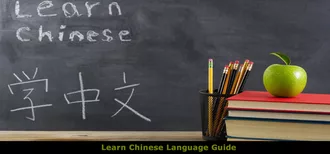
what is cyan and magenta in chinese?